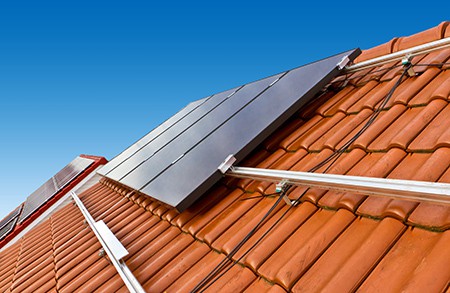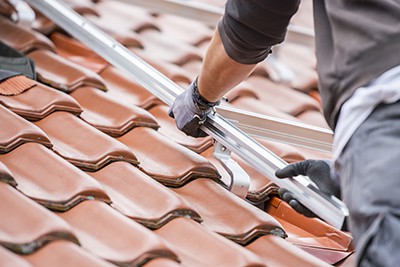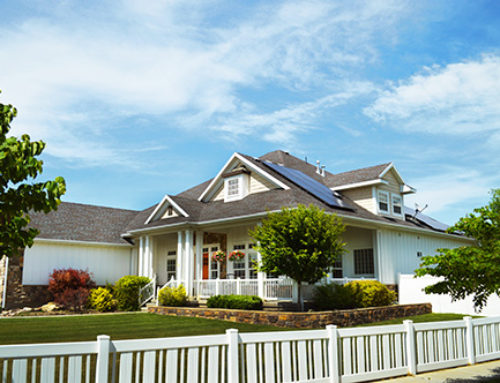Are you in the market for a new solar panel mount? If so, you’ve come to the right place—and at the right time.

Solar energy share has become one of the hottest stocks of the 21st century, as more individuals and corporations are turning to solar companies to have sustainable power options. We’re here to give you a stronger sense of what to expect from solar panel mounts in general, as well as a primer on the different types of mounts that are currently available so that you are able to have the most efficient solar panels in the solar industry.
When we’re through, you should have all the information you need to make an informed decision on your purchase.
Understanding Solar Panel Mounts: What they Are and Why They’re Necessary
In finding the right solar system for you there are important areas to look into such as the sensor, net metering, the output of the panels and many other aspects. Solar panel mounts and racks help you to get the best bang for your buck by keeping your solar panels secure, allowing for optimum energy production.

Adjustable solar panel mounts can be tilted as necessary, depending on factors such as latitude, the time of year, and the hour of the day. Panels can be mounted from either the roof or the ground so you can have the most efficient solar panels possible (see the next section for details on the differences).
If your panels don’t remain in place, they can’t operate at maximum efficiency when it comes to solar charger power. Since the cost of the mounting typically makes up less than 10 percent of the overall budget for your portable solar array, there’s no reason to forgo this important step.
Solar panel roof mounts are typically constructed of stainless steel or aluminum, so they’re built to last. Ground mount solar panel options offer the same quality—the differences are largely cosmetic, as you’ll learn in the following section.
Solar Rooftop vs. Ground Mount PV: The Pros and Cons
Rooftop mounts tend to be more popular than ground mounts, largely because they’re far less expensive. Because they require fewer mounting hardware, they take less time to install, which saves money on both the material and labor costs. Additionally, many roofs have enough of a slant to help solar rooftop panels achieve maximum exposure to solar light and maximum efficiency. If you have a large roof with enough available surface area to hold the panels securely, then a quick mount solar roof installation with a solar panel kit could be the right choice for you.

Ground mount PV (or photovoltaic) solar panels are a good alternative for those with insufficient roof space, not enough sunlight exposure, or too much shade from surrounding buildings. There’s greater versatility in ground mount systems, which can make them more appealing. The main drawbacks are the increased cost and the loss of acreage that occur as a result of the installation. In fact, some properties may not be large enough to consider this type of mount.
If you opt for a ground-mount system, understand that there are three basic types that are efficient solar panels:
Regular
Generally a regular ground-mount system is fixed panels that can only be adjusted manually.
Single-axis tilt
In a single-axis tilt the panels are able to move up and down along a horizontally-fixed pole to follow the sun’s path throughout the day so it can maximize the sunlight.
Dual-axis tilt
Dual-axis tilt is the most versatile mounting lamp, with a vertical pole added to the horizontal one; this allows the solar panels to travel from side to side, as well as up and down.
Other Considerations
Whether you’re looking at solar panel roof mounts or a ground mount solar panel system, there will be some red flags to watch out for.
“Budget” systems if a company offers a “budget” option, make sure you understand what is and isn’t included in the package. Some will only include the basics, such as rails and joints; you’ll need to invest in the pipes separately, as well as the installation.

Quick mounting hardware products while saving time can be a good thing, it isn’t worth it if the product is inferior. Research the brands thoroughly to ensure that they have a solid reputation for quality and durability before committing to a quick mount solar panel system.
Solar trackers single- and dual-axis solar trackers contain PV nodules with the ability to follow the sun. This equipment makes up a large portion of the solar energy share—in some cases, the tracker can cost more than the actual system. While they do increase energy by as much as 40 percent, the boost usually isn’t worth the investment.
Looking Toward the Future
While traditional solar panels continue to rely on mounts for stability, they may not be the final word in solar energy. As we move toward a new decade, the options for people looking to invest in a portable solar array are expected to increase.
Here are just a few of the cutting-edge technologies that are currently in the developing stages:
Clear Solar Panels
These will be placed on regular windows and generate solar power through the absorption of UV light.
Split Cell Solar Modules
Split Cell Solar Modules utilize a new form of architecture that promotes maximum efficiency—all at half the size of a traditional solar panel.
Bifacial
Bifacial panels would have the ability to absorb light from both sides, thereby dramatically increasing the solar charger power.
Whether your needs are residential or commercial, whether you opt for adjustable solar panel mounts or a more stable mounting lamp—there’s bound to be a solar panel mount system listed above that will work for you. Remember that until some of the newer technology is implemented, your solar charger power or your battery depends entirely upon the placement and efficiency of your panels, so be sure to choose wisely.
